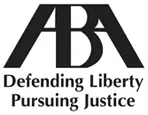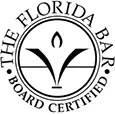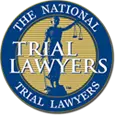How Are Wrongful Death Settlements Paid?
The unexpected loss of a loved one due to another person’s negligence or wrongful actions is a crushing experience that no family should have to endure. Beyond the overwhelming grief and emotional trauma, families often face significant financial burdens in the wake of such a tragedy. This is where wrongful death settlements play an important role, offering financial compensation to the deceased’s family members. But how exactly are these settlements paid?
Here, we’ll explore the details of wrongful death settlements and payment processes while highlighting the role a wrongful death lawyer can play in securing fair compensation for grieving families.
Understanding Wrongful Death Claims

A wrongful death claim is a legal action taken when an individual loses their life due to another party’s negligence, recklessness, or intentionally harmful act. Depending on state laws, close family members of the deceased typically file these claims, such as spouses, children, or parents.
The primary purpose of a wrongful death claim is to seek compensation for the various damages suffered by the family due to their loved one’s passing. These losses can be economic and non-economic. Economic losses might include:
- The deceased’s lost income and benefits.
- Medical expenses related to the final injury or illness.
- Funeral and burial costs.
Non-economic losses, while more challenging to quantify, are equally important and may include loss of companionship, emotional pain and suffering, and loss of guidance and support.
Wrongful death claims can be overwhelmingly challenging, especially while grappling with grief and emotional distress. This is precisely why many families work with a wrongful death lawyer.
The Process of Reaching a Wrongful Death Settlement
Understanding how wrongful death settlements are paid starts with grasping the settlement process. This journey typically involves several steps, each of which can significantly impact the outcome.
The process usually begins with a thorough investigation of the incident that led to the death. A wrongful death lawyer plays a pivotal role in this stage, gathering all relevant evidence, including police reports, witness statements, professional opinions, and other pertinent documentation. This comprehensive approach ensures we consider all aspects of the case and properly document the full extent of the negligence or wrongful action.
Following the investigation, the next step involves calculating the full extent of damages. This is a complicated process that requires careful consideration of both current and future losses. A skilled wrongful death lawyer will work closely with the family to determine all applicable damages, including tangible and less tangible non-economic losses. They may also consult economists to project future losses, such as the deceased’s potential lifetime earnings.
After we calculate the damages, the lawyer prepares and sends a formal demand letter to the at-fault party or their insurance company. This letter outlines the case in detail, presents the evidence of negligence or wrongful action, and requests specific compensation based on the calculated damages.
This demand letter usually kickstarts the negotiation process. Negotiations can be lengthy and complex, often involving multiple rounds of offers and counteroffers. During this stage, having a skilled wrongful death lawyer is advised. They can leverage their negotiation skills and legal knowledge to advocate effectively for maximum compensation, countering any attempts by the other party to minimize the settlement amount.
If negotiations reach a satisfactory agreement, both parties will sign a settlement. This legally binding document outlines the settlement terms, including the agreed-upon amount and the payment method.
We may take the case to trial if negotiations do not produce a fair settlement. In such instances, a wrongful death lawyer’s role becomes even more important, as they will represent the family in court, presenting the case before a judge and jury.
Throughout this process, from investigation to settlement or trial, a wrongful death lawyer is an advocate, advisor, and support system for the grieving family. They handle the legal issues, allowing the family to focus on healing and honoring their loved one’s memory.
Types of Wrongful Death Settlement Payments
When it comes to the actual payment of wrongful death settlements, there are typically two main methods: lump sum payments and structured settlements. Each payment type has advantages and potential drawbacks, and the choice between them often depends on the case’s specific circumstances and the bereaved family’s needs.
Lump sum payments involve paying the entire settlement amount at once, usually within a few weeks of signing the settlement agreement. This payment method can be particularly beneficial for families facing immediate financial pressures. It provides instant access to the full settlement amount, allowing families to pay off any debts or expenses that may have accumulated, such as medical bills or funeral costs.
Also, a lump sum payment allows families to use the money as they see fit. They might invest a portion for future needs, set aside funds for children’s education, or make necessary lifestyle adjustments. However, receiving a large sum of money simultaneously also comes with challenges. It requires careful financial management to ensure we use the funds wisely and make them last as long as needed. There’s also the potential for tax implications, although it’s worth noting that most wrongful death settlements are not taxable.
On the other hand, structured settlements involve regular installments over a set period rather than a single large payment. We can customize these settlements to meet the family’s specific needs. For instance, they might include monthly or annual payments for a certain number of years, larger lump sums at specific intervals (such as every five years), or payments that increase over time to account for inflation.
Structured settlements offer several advantages. They provide a guaranteed income stream over an extended period, which can offer financial stability and peace of mind. They may also have tax benefits, as the growth on the unpaid balance is typically tax-free. Furthermore, structured settlements can protect against the risk of overspending that sometimes comes with receiving a large lump sum.
However, structured settlements also have potential drawbacks. They offer less flexibility in using the money because we determine the payment schedule in advance. There’s also the risk that the payments may not keep pace with inflation over time. Additionally, if the party responsible for making the payments (often an insurance company) were to go bankrupt, future payments can be at risk.
Deciding between a lump sum payment and a structured settlement is a significant decision that can have long-term financial implications for the family. This is another area where the guidance of a wrongful death lawyer can be invaluable. They can help families understand the pros and cons of each option, considering factors such as the family’s current financial situation, future needs, and potential risks. A lawyer can also negotiate the terms of a structured settlement to ensure it best serves the family’s interests.
Factors Affecting Wrongful Death Settlement Payments

Several factors can influence how we pay a wrongful death settlement. Understanding these factors is crucial for families navigating the settlement process and deciding payment structures.
One of the primary factors is the family’s preferences. Some families may require a large sum immediately to cover outstanding expenses or debts, making a lump sum payment more appealing. Others might prefer the security and predictability of regular payments over time, favoring a structured settlement.
The size of the settlement also influences the payment method. Larger settlements are more likely to be structured over time for practical reasons and potential tax benefits. Smaller settlements, on the other hand, are often paid as lump sums.
Another crucial consideration is the paying party’s financial stability. If there are concerns about the at-fault party’s long-term ability to make payments, a lump sum might be preferable to ensure the family receives the full settlement amount.
Tax considerations can also impact the choice of payment method. While wrongful death settlements are generally not taxable, the interest earned on a lump sum payment might be. Structured settlements can sometimes offer tax advantages in this regard.
State laws can also affect how settlements are paid, especially in cases involving minors. Some states have specific regulations about how settlement funds for minors must be managed and distributed.
The nature and extent of the family’s losses can also influence the payment structure. For instance, a structured settlement might be more appropriate if the deceased is the primary breadwinner and the family needs ongoing support to replace that lost income.
Finally, the strength of the case and the negotiation process can affect both the settlement amount and payment terms. A strong case might result in a more favorable payment structure for the family.
A knowledgeable wrongful death lawyer can help families navigate these various factors, providing insights into how each might impact their specific situation. They can also advocate for a payment structure that best serves the family’s needs, both in the short and long term.
The Role of Insurance in Wrongful Death Settlement Payments
In many wrongful death cases, the settlement is not paid directly by the at-fault individual or company but rather by an insurance company. Understanding the role of insurance in these cases is key, as it can significantly impact the settlement process and payment structure.
Depending on the circumstances of the death, different types of insurance policies might come into play. For instance, a homeowner’s insurance policy might be responsible for the settlement if the death occurred on someone’s property. An auto insurance policy will typically cover the settlement in car accident deaths. When a company’s negligence causes deaths, a business liability policy will likely come into play.
When insurance is involved in a wrongful death settlement, it can sometimes streamline the payment process. Insurance companies are accustomed to handling large payouts and have established procedures for processing settlements. This can create more predictable timelines for receiving payment after settling.

However, it’s important to remember that insurance companies are businesses whose primary goal is to minimize their financial liability. They employ teams of lawyers and adjusters who settle claims for as little as possible. This is where having a skilled wrongful death lawyer becomes particularly crucial. A lawyer with experience in dealing with insurance companies can level the playing field, negotiating effectively to ensure the family receives fair compensation.
Insurance policies also have limits, which can impact the settlement amount and payment structure. If the damages exceed the policy limits, the family’s lawyer might need to explore other avenues for compensation, such as pursuing the at-fault party’s assets or identifying additional liable parties.
In cases involving structured settlements, insurance companies often fund these arrangements by purchasing annuities. These are financial products designed to provide a stream of payments over time. The insurance company’s financial stability becomes particularly important in these cases, as the family will rely on them for payments potentially spanning many years.
A wrongful death lawyer can provide valuable insights into the insurance aspects of a case. They can help families understand the relevant insurance policies, their limits, and how they might affect the settlement. They can also handle all communications and negotiations with the insurance company, protecting the family’s interests.
What Happens After the Wrongful Death Settlement is Agreed Upon?
Reaching a settlement agreement is a significant milestone in a wrongful death case, but it’s not the end of the process. Several important steps must occur before the family receives the settlement funds.
First, the family typically must sign a release of claims. This legal document states that the family agrees not to pursue any further legal action related to the death in exchange for the settlement payment. A wrongful death lawyer can review this document carefully to ensure it protects the family’s interests and contains no unfair or overly broad terms.
In some cases, particularly those involving minors, the court must approve the settlement before we can make the payment. This is a protective measure to ensure that the settlement is in the best interests of any minor beneficiaries. The family’s lawyer will present the settlement to the court for approval.
After completing these steps, we begin processing the payment. The check for lump sum payments usually takes a few weeks to process and send. The family’s lawyer often receives the check on behalf of the family and deposits it into a trust account before disbursing it to the family.
We typically set up an annuity for structured settlements to make regular payments. This process can take longer as it involves setting up the annuity contract and ensuring we correctly establish all the payment details.
If multiple family members receive part of the settlement, we must distribute the funds according to the agreement or court order. This distribution process can sometimes be complex, particularly in cases involving blended families or disputes among family members.
A wrongful death lawyer plays a vital role throughout these final steps. They ensure that all necessary paperwork is completed correctly and on time; we manage the payment process to ensure that we deliver the full agreed-upon amount and handle any issues that might arise during the distribution of funds.
Don’t Hesitate to Seek Legal Help From a Wrongful Death Lawyer

While going through a wrongful death claim is never easy, understanding the process can help families feel more empowered and prepared. By working with a compassionate and experienced wrongful death lawyer, families can focus on healing while protecting their legal and financial interests.
Remember, if you find yourself in the unfortunate situation of needing to pursue a wrongful death claim, don’t hesitate to seek legal help. A personal injury attorney can guide you through the legal landscape, fight for fair compensation, and help ensure that the settlement you receive provides for your family’s needs both now and in the future.
Free Consultation
We Are Here For You 24/7
Reviews
– Elissa M.
“Really pleased with Boohoff Law! Received immediate responses when I had any questions. Treated amazingly by all staff … made this process a true breeze!”
– Caitlyn M.
– Brandy K.
Related Posts
Steps to Take After a Drunk Driver Hits Your Vehicle in Seattle
What Compensation Can You Claim for Severe Burn Injuries
What to Do After Being Injured in a Parking Lot Accident in Seattle
Recovery is personal.
We’re here for you.
You're better off with Boohoff.











The information on this website is for general information purposes only. Nothing on this site should be taken as legal advice for any individual case or situation. This information is not intended to create, and receipt or viewing does not constitute, an attorney-client relationship.
available 24/7
(877) 999-9999
